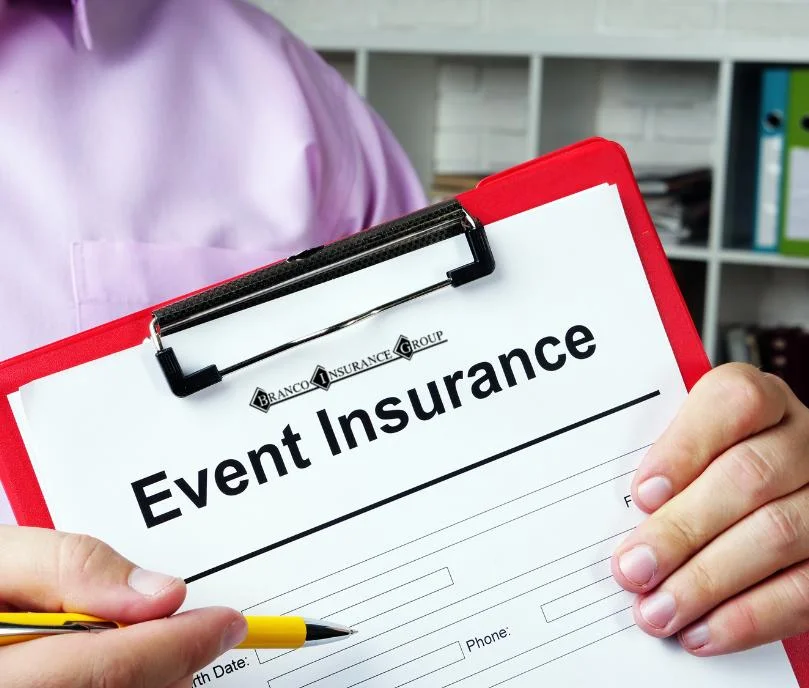Event Insurance Coverage for Vendors
Event insurance provides crucial protection for vendors participating in various events, safeguarding them against potential financial losses and liabilities. This coverage ensures that vendors can participate in events with peace of mind, knowing that they are protected in case of unforeseen circumstances.
There are several types of coverage available for vendors at events. These include:
- Liability insurance: Protects vendors against claims of bodily injury or property damage caused to third parties during the event.
- Property insurance: Covers the vendor’s equipment, inventory, and other property against loss or damage due to theft, fire, or other covered perils.
- Business interruption insurance: Provides coverage for lost income if the event is canceled or postponed due to unforeseen circumstances.
- Errors and omissions insurance (E&O): Protects vendors against claims of negligence or mistakes in their professional services.
Event insurance can protect vendors against various risks, including:
- Injuries or accidents involving customers or attendees
- Damage to or theft of the vendor’s property
- Event cancellation or postponement due to weather or other factors
- Legal claims or lawsuits arising from the vendor’s products or services
Having adequate event insurance coverage is essential for vendors to protect their financial interests and mitigate risks associated with event participation. It ensures that they can continue operating their businesses and recover from unexpected events without facing significant financial setbacks.
Factors to Consider When Choosing Event Insurance
When selecting an event insurance policy, vendors should carefully consider the following key factors:
Assessing Coverage Needs
Vendors must determine the appropriate level of coverage based on the size, scope, and potential risks associated with their event. Consider factors such as the number of attendees, the value of equipment, and the potential for accidents or liabilities.
Deductibles and Premiums
Deductibles represent the amount vendors must pay out-of-pocket before insurance coverage kicks in. Higher deductibles typically result in lower premiums, while lower deductibles lead to higher premiums. Vendors should weigh the financial implications of these options and select a deductible that aligns with their risk tolerance and budget.
Premiums are the payments vendors make to the insurance company in exchange for coverage. Premiums are calculated based on various factors, including the level of coverage, the deductible, and the vendor’s claims history. Vendors should compare quotes from multiple insurers to find the most competitive premium.
Common Exclusions in Event Insurance Policies
Event insurance policies for vendors often contain exclusions that limit the coverage provided. Understanding these exclusions is crucial to ensure adequate protection and avoid potential gaps in coverage.
Common exclusions in event insurance policies for vendors include:
- Intentional Acts: Coverage is typically excluded for damages or injuries caused by intentional or criminal acts committed by the vendor or their employees.
- Alcohol-Related Incidents: Liability coverage may not extend to incidents involving the consumption or distribution of alcohol, unless specifically endorsed.
- Acts of God: Coverage may not include damages caused by natural disasters, such as earthquakes, floods, or hurricanes.
- Pre-Existing Conditions: Injuries or illnesses that existed prior to the event may not be covered.
- Property Owned by Others: Coverage may not extend to damages or losses to property owned by third parties, such as the venue or other vendors.
These exclusions can significantly impact coverage and should be carefully considered when purchasing event insurance. To mitigate the risks associated with these exclusions, vendors should:
- Obtain endorsements: Endorsements can be added to the policy to cover specific excluded risks, such as alcohol-related incidents or property owned by others.
- Review the policy carefully: Before purchasing insurance, vendors should thoroughly review the policy and identify any potential exclusions that may affect their coverage.
- Consider additional insurance: Vendors may need to purchase additional insurance, such as general liability insurance or commercial property insurance, to cover risks that are not included in their event insurance policy.
Obtaining Event Insurance as a Vendor

As a vendor, obtaining event insurance is crucial to protect yourself and your business from potential risks and liabilities. Here are the steps involved:
1. Determine Your Insurance Needs: Assess the specific risks associated with your vending activities, such as property damage, bodily injury, or loss of income.
2. Research Insurance Providers: Compare different insurance providers and their offerings to find the best coverage and rates. Consider factors such as coverage limits, premiums, and deductibles.
3. Get Quotes: Request quotes from multiple providers to compare their plans and pricing. Make sure to provide accurate information about your business and the events you plan to attend.
4. Review the Policy Carefully: Before purchasing, thoroughly review the policy to ensure it meets your specific needs. Pay attention to coverage details, exclusions, and any conditions or limitations.
5. Purchase the Policy: Once you have selected a provider and reviewed the policy, proceed with purchasing the insurance. Make sure to pay the premium on time to activate your coverage.
| Provider | Coverage Limits | Premiums | Deductibles |
|---|---|---|---|
| Provider A | Up to $1 million | $250-$500 | $500 |
| Provider B | Up to $2 million | $300-$600 | $1,000 |
| Provider C | Up to $3 million | $400-$800 | $1,500 |
It’s important to note that event insurance policies may have certain exclusions, such as:
– Intentional acts or negligence
– Acts of war or terrorism
– Damage to property owned by the vendor
– Loss of income due to weather or natural disasters
Claims Process for Event Insurance
Event insurance policies for vendors typically Artikel a clear claims process to ensure timely and efficient resolution of any covered losses. Understanding the claims process can help vendors navigate the process smoothly and maximize their coverage.
Step-by-Step Guide to Filing a Claim
1. Report the Incident Promptly: Notify the insurance company about the incident or loss as soon as possible, usually within 24-72 hours.
2. Gather Documentation: Collect all relevant documentation, such as contracts, receipts, witness statements, and photographs.
3. File a Formal Claim: Submit a written claim form to the insurance company, providing a detailed description of the incident, the extent of damages, and the amount of coverage sought.
4. Cooperate with the Investigation: The insurance company may appoint an adjuster to investigate the claim. Provide all requested information and documentation to facilitate the process.
5. Negotiate the Settlement: Once the investigation is complete, the insurance company will determine the amount of coverage payable. Negotiate a fair settlement that covers the actual losses incurred.
Documentation Required
* Contracts and agreements related to the event
* Invoices and receipts for expenses
* Proof of damages, such as photographs or repair estimates
* Witness statements or incident reports
* Medical records (if applicable)
Timeframe for Processing Claims
The timeframe for processing claims varies depending on the insurance company and the complexity of the case. Generally, claims are processed within 30-60 days, but it can take longer for complex claims or those involving disputes.




